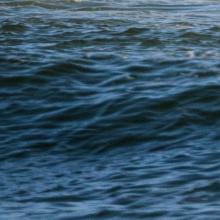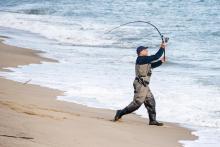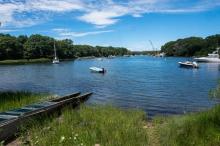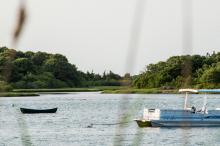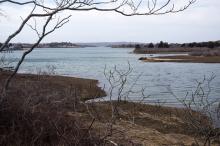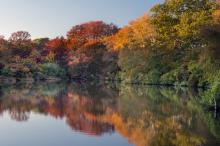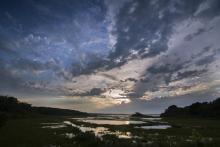As communities on the Island and across the region look to shellfish as a possible strategy to restore the health of coastal ponds, a study on the Cape provides numbers to back up their work.
Coastal Ponds
October 8, 2016
The Vineyard Gazette’s series on coastal ponds was recognized with an award for outstanding journalism this week by the New England Newspaper and Press Association. Alex Elvin was the principal reporter on the series.
August 31, 2016
Suzan Bellincampi
Rust tide is in the news again, reported recently in Long Island waters.
August 24, 2016
Heather Hamacek
Drew’s Cove in Lake Tashmoo could become a no-anchor zone for the next three years to protect fragile eelgrass beds near the head of the saltwater estuary.
July 21, 2016
Alex Elvin
Nashaquitsa Pond has become a laboratory for eelgrass restoration, although poor water quality and other factors appear to be keeping the aquatic species from re-establishing.
May 9, 2016
Julia Wells
With Vineyard coastal ponds at a tipping point, on Thursday this week the Martha’s Vineyard Commission will lead a daylong conference Thursday.
March 1, 2016
Alex Elvin
With support from the Edey Foundation, the Chilmark shellfish department plans to restore vital eelgrass beds that vanished from Nashaquitsa Pond.
November 26, 2015
Alex Elvin
The Massachusetts Estuary Project, which studied 12 Island bodies of water, has raised awareness of growing nitrogen problems and spurred action at several levels.
November 12, 2015
Alex Elvin
A Sengekontacket oyster project has been such a success that the shellfish department will ask selectmen to open the pond to commercial oystering.
October 29, 2015
Alex Elvin
Man-made breaches at Island ponds help maintain salinity for shellfish and eelgrass and flush out nitrogen that accumulates mostly from septic tanks and runoff.
October 22, 2015
Alex Elvin
Without wastewater treatment facilities, Island ponds could be in worse shape. Estuaries suffer from nitrogen overload, coming mostly from septic systems that remove bacteria but not nitrogen.
September 17, 2015
Alex Elvin
A few hundred alternative systems are installed on Martha's Vineyard, mostly in Edgartown and Oak Bluffs. The technology could help achieve nitrogen mitigation in Island coastal ponds.

